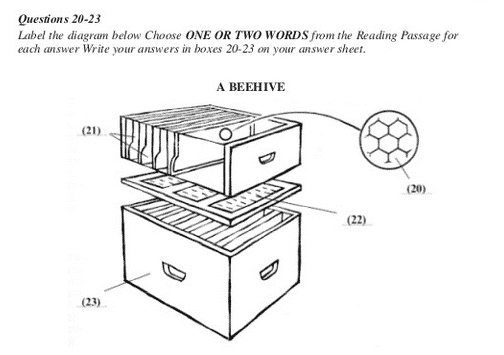雅思阅读复习应做到分题型审题解题一文告诉大家在进行雅思阅读的复习时,我们最好能够对题型进行归纳,并按照题型来总结审题的要点和解题的思路。下面小编就和大家分享雅思阅读复习应做到分题型审题解题,来欣赏一下吧。
雅思阅读复习应做到分题型审题解题
众所周知,雅思阅读考试的时间仅仅是60分钟整,排除我们正常填涂答题卡的时间(约5分钟)还只剩55分钟,期间我们要完成A类三篇(或G类五篇文章)的阅读,同时还要针对40道题进行作答,听上去就会让我们不由得有些担心时间够不够用的问题。
了解雅思阅读考试的同学们应该都知道雅思阅读考试有8大备考题型:list of headings、complete the sentences、answer short questions、picture filling、summary、multiple choices、matching、true or false or not given。但是,很多考生只知其一不知其二,雅思考试可谓是明枪易躲暗箭难防,这所谓的“暗箭”就是八大题型均包含审题陷阱,也就是说八大题型都需要审题。这无疑对雅思考生又是一个重磅炸弹,在仅有的55分钟的做题时间里,还需要匀出一部分时间进行审题,简直是难上加难,烤鸭们莫急,莫急,小编在本篇文章就将针对八大题型审题问题进行分析,最终会抛出一秒钟击破雅思阅读八大题型审题瓶颈的方法。
简单来讲,就出题方式,可以将八大题型整合为三大题型分别为:判断题,填空题以及选择题。下面就来分别阐释三种题型。
八大题型中只有一种题可以归类为判断题,如果从字面义上稍微理解一下上文提及的八大题型,就不难发现,只有true or false or not given 一种题型属于判断题。一秒钟击破判断题审题瓶颈,我们在考试中如果遇到了对错无关题,只需要看清题目要求的true or false or not given还是yes or no or not given。80%的题目要求将正确的选项用TRUE表示,错误选项用FALSE表示。但是也有20%的题目要求相应的用YES/NO来表示正确以及错误选项。如果不能很清楚的看清题目要求,那我们的答案是会按照错误去处理的,所以一定要注意。
针对填空题这种形式的考题,总体来讲有几种,summary、complete the sentences、answer short questions、picture filling这几种。在此,有必要小注一下:summary(摘要题)这种题有两种出题形式,手边有剑桥六这本书的同学可以翻到97页这是一种填空式的摘要题,而翻到91页审题会发现同样的summary可是形式确实选择题。本段针对summary的填空题型审题原则进行阐释。填空题我们在审题的过程中肯定会发现大写黑体加粗的几个词NO MORE THAN x WORDS(不超过x个单词)。我们可以用一个数学等式来表示即:小于等于x个单词。一般情况下都是小于等于三个单词,而个别情况下我们还会发现小于等于两个单词的情况出现。所以一秒钟的时间只需要看清问号是数字几就可以了。
最后一种就是选择题,这种考题分为:list of headings、matching、summary、multiple choice 这几种题型。首先:list of headings 题请参考剑桥四第96页。切忌:这种题答案唯一性,用过一次即在备选项中排除。再有matching、summary这种题请将一秒钟的时间用于寻找题目要求中有无NB两个字母,如果有请记住:有且只有一个选项需用两次。答案不再唯一性。如果没有则答案唯一性。最后multiple choice 看清题目所配题号则可知道单选或多选。
雅思阅读材料:西红柿应该买什么样的?
An international standard for tomatoes has been adopted, ending about seven years of intense debates between countries on what qualifies as a proper tomato.
According to the new standard, tomatoes may come in one of four varieties: round, ribbed, oblong or elongated, or cherry tomatoes and cocktail tomatoes.
They must be whole, clean, free from foreign smell, free of pests and fresh in appearance.
"In the case of trusses of tomatoes, the stalks must be fresh, healthy, clean and free of all leaves and other visible foreign matter," according to the so-called Codex standard.
A commission called Codex Alimentarius was (R)created in 1963 by the Food and Agricultural Organisation (FAO) and the World Health Organisation to come up with food standards and guidelines on food products.
There are international standards for all kinds of food produce ranging from edam cheese to bananas to fish fillets.
They facilitate trade, as they provide a common interpretation of what constitutes a sound product to importing and exporting countries.
Tom Heilandt, who is a senior food standards adviser at the FAO explained that one such international standard was needed for tomatoes, in order to protect importing countries.
"Many developing countries in particular said that they needed this standard so that they ensure that they would get the right quality of products that they ordered," he said.
雅思阅读材料:人变胖是什么原理
The discovery of the obesity gene in humans half a decade ago offered evidence that chronic weight gain is the consequence of a mismatch between nature and nurture. Simplistic explanations, such as blaming obesity on a drop in fat consumption, ignore scientific reality. In countries like India and China, obesity was virtually unknown until the introduction of a high-fat, western-style diet.
One well-known reason for this is that dietary fat converts to (转换为 )body fat more efficiently than does protein or carbohydrate, but recently scientists have uncovered what appears to be an equally important factor. Some researchers in universities are investigating the possibility that high levels of fat and fructose are mucking up(扰乱 ) our brain chemistry, and thereby muting the signals that would normally tell us to put down the fork. These signals are produced by peptides, which are regulated by a number of hormones. Under normal conditions these hormones help maintain a stable body weight by adjusting levels of the peptides that control eating. But a diet loaded with fat and fructose hampers the regulation of these hormones. Complicating matters still further is that the brain loses its ability to respond to these hormones as body fat increases -- so the obese are doubly penalized.
Other researchers are finding evidence that constant exposure to fat and sugar can cause some humans to crave (渴望)them as they do an addictive drug. A Princeton University psychologist recently showed that rats fed a high sugar diet were, when the sugar was removed, thrown into a state of anxiety similar to that seen in withdrawal from morphine or nicotine. Sarah Leibowitz, a neurobiologist, believes that frequent exposure to fatty foods may configure the brain to crave still more fat. She has shown in animal studies that galanin, a brain peptide that simulates eating behavior and decreases energy expenditure, increases when the animal eats a high-fat diet.
There are many factors contributing to the explosion of obesity in the United States, and the world, but the radical changes in the composition of our diet are first among them. While scientific work in this area is in its infancy, it's already clear that varying the amount of fat and other nutrients in the diet affects brain chemistry by activating certain genes, and this in turn directs our dietary preferences. By submitting ourselves to a steady dose of highly processed, sweet, high-fat foods, we have unwittingly entered into a dangerous experiment, the long term consequences of which are only now beginning to surface.
英语阅读
-
相关文章
- 主题型基金是什么意思
- 芯片ETF是什么意思
- 雅思考试报名条件及时间2022
- 2022年雅思口语考试被取消 2022雅思口语考试新变动
- 2022天津雅思考试时间 雅思2022年考试安排天津
- 雅思考试报名费用2022 雅思考试报名官网2022
- 2022留学申请GRE分数要求 出国留学雅思要多少分才行20
- 雅思写作大小作文怎么算总分 2022雅思写作大小作文分值
- 雅思indicator和雅思的区别 2022雅思机考和ind
- 中级注册安全工程师考试题型与分值 中级安全注册工程师哪个专业
姐的欢喜 » 雅思阅读复习分题型审题解题
免责声明:本文由网友提供互联网分享,经供参考,不代表本网的观点和立场。

 英文信件结尾处署名写在左边还是右边
英文信件结尾处署名写在左边还是右边 小学达到英语专四只能算“标配”?谁在助推
小学达到英语专四只能算“标配”?谁在助推 英语句子的连词(英语三个句子并列用什么连
英语句子的连词(英语三个句子并列用什么连 雅思阅读到底考你什么?
雅思阅读到底考你什么? 雅思阅读不同题型答题技巧
雅思阅读不同题型答题技巧